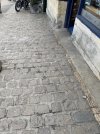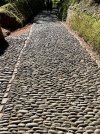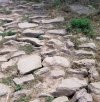- Time of past OR future Camino
- June: Camino Frances from Pamplona
I’ve heard a lot about cobblestones and setts, about how they are a nightmare, etc. How true is this? My wife and I are both 76 and my wife simply cannot afford to fall due to osteoporosis and vertebral fractures. How safe would it be for us the walk the coastal root?
























